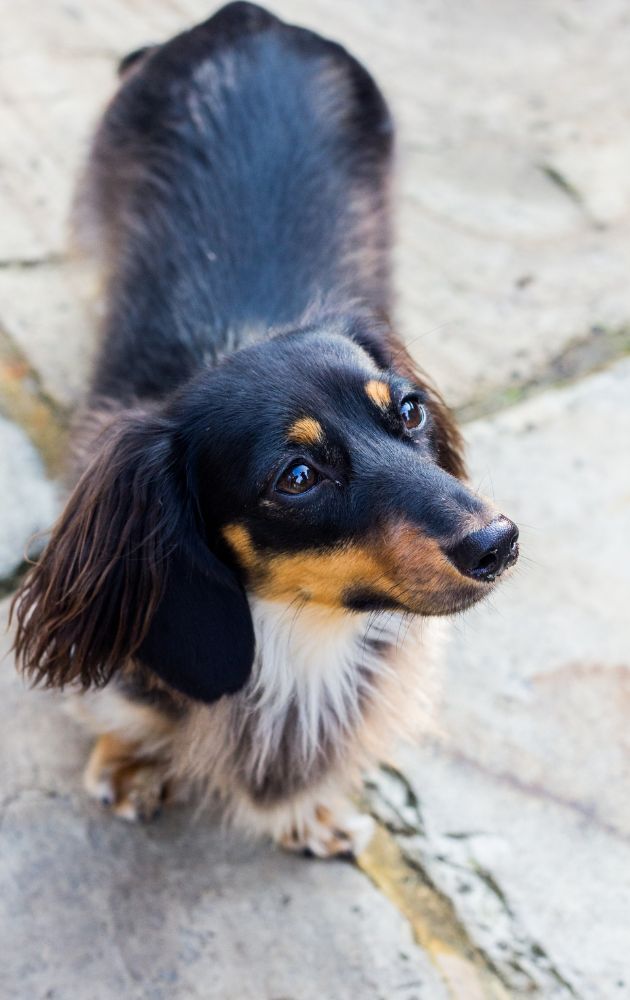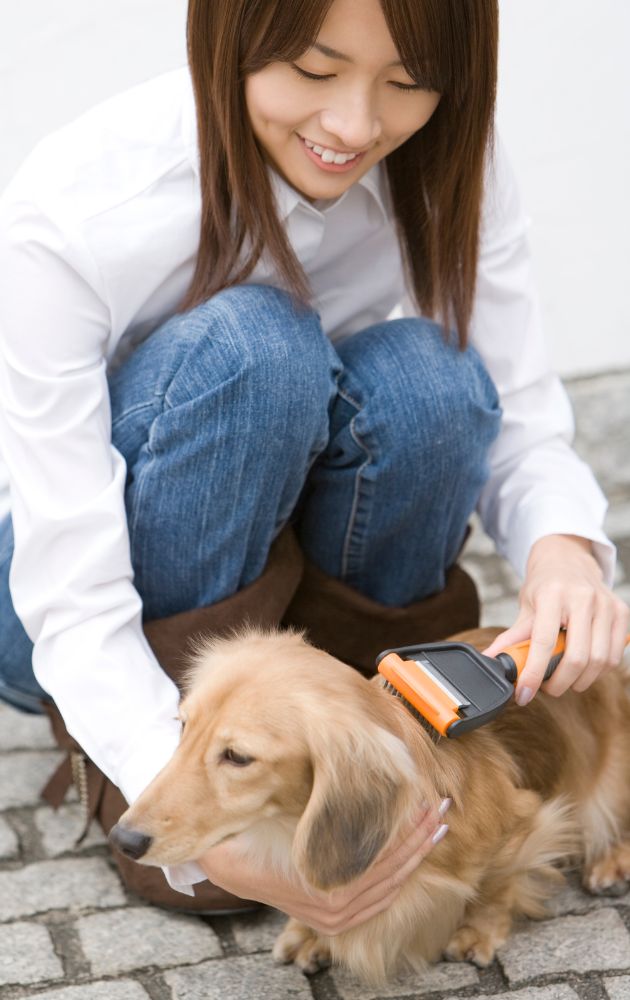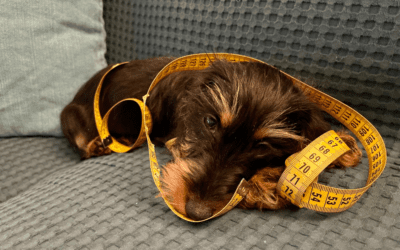Dachshunds are a popular breed known for their affectionate personalities and unique appearance. However, many people wonder if dachshunds shed and how much shedding to expect. In this blog post, we will explore the topic of dachshund shedding in detail and provide you with a comprehensive guide to help you manage your dachshund’s shedding.
The Truth About Dachshund Shedding: How Much is Normal?
If you’re a dachshund owner, you may be curious about how much your furry friend should be shedding. Shedding is a natural process for dogs, and dachshunds are no exception. However, the shedding patterns of dachshunds depend on their coat type – short-haired, long-haired, or wire-haired.
Shedding Patterns of Dachshunds
Short-haired dachshunds have smooth and shiny fur that sheds less than the other two types. Their coats require minimal maintenance, making them a good option for owners who don’t want to spend a lot of time grooming their pets. On the other hand, long-haired and wire-haired dachshunds have rougher coats that shed more frequently. If you own one of these breeds, you may need to spend more time brushing and grooming your pet to keep shedding under control.
Short Haired Dachshund Shedding
Short-haired dachshunds have sleek and shiny coat that doesn’t require as much attention as the other two coat types. While they still shed, it’s less noticeable than the shedding of other breeds. They typically have a seasonal shed, which means they will shed more during certain times of the year. If you notice your short-haired dachshund shedding excessively outside of its normal shedding season, it may be a sign of an underlying health issue.
Long Haired Dachshund Shedding

Long-haired dachshunds have a silky and soft coat that requires more attention to prevent matting and tangling. They shed more frequently than short-haired dachshunds, but with proper grooming, you can minimize shedding. Long-haired dachshunds also have a seasonal shed, and you may notice an increase in shedding during the spring and fall.
Wire Haired Dachshund Shedding
Wire-haired dachshunds have coarse and thick coat that requires the most attention when it comes to grooming. They shed more than short-haired dachshunds but less than long-haired dachshunds. Regular grooming can help keep shedding under control and prevent matting, which can be uncomfortable for your pet.
Shedding is a natural process for dachshunds, and the amount they shed depends on their coat type. By understanding the shedding patterns of your dachshund and providing proper grooming, you can keep shedding under control and ensure your furry friend stays healthy and happy.
Factors That Affect Dachshund Shedding Levels
If you’re a dachshund owner, you may have noticed that your furry friend’s shedding levels can vary from time to time. Several factors can influence a dachshund’s shedding, including its diet, age, and the weather. Let’s take a closer look at each of these factors.
How Does a Dachshund Diet Affect Shedding?

Just like with humans, a dachshund’s diet can impact its shedding levels. A well-balanced diet that contains all the essential nutrients can promote healthy skin and a shiny coat, which can reduce shedding. On the other hand, if your dachshund’s diet is lacking in certain nutrients, it can result in a dull coat and excessive shedding. Therefore, it’s crucial to feed your furry friend a high-quality diet that meets their nutritional needs.
Do Dachshund Shedding Levels Change With Age?
As dachshunds age, their shedding levels may also change. Puppies usually shed less than adult dachshunds. As they grow older, they may shed more, especially during seasonal shedding periods. Additionally, older dachshunds may experience health issues that can affect their coat’s health and increase shedding. Therefore, it’s crucial to monitor your dachshund’s shedding levels and consult a vet if you notice any sudden changes.
How Weather Impacts Dachsund Shedding
The weather can also play a role in a dachshund’s shedding levels. During warmer months, dachshunds may shed more as they lose their winter coat. Conversely, during colder months, they may shed less to retain warmth. Therefore, it’s essential to adjust your grooming routine accordingly to help manage shedding levels. During shedding seasons, it’s helpful to brush your dachshund regularly to remove loose fur and prevent it from spreading around your home.
How Much Shedding Is Normal for Dachshunds
Dachshunds are known for their unique coat types and each type can shed differently. However, it is important to note that all dachshunds shed to some extent. Understanding how much shedding is normal for your dachshund can help you manage their shedding and keep your home clean.
Shedding Levels by Coat Type
Short-haired dachshunds tend to shed less than long-haired and wire-haired dachshunds. However, even short-haired dachshunds will shed more during the change of seasons. Long-haired dachshunds have a beautiful, flowing coat but will shed more frequently than the other coat types. Wire-haired dachshunds also shed frequently, but their coarse outer coat can help trap loose hair.
Comparison of Dachshund Shedding to Other Breeds
When compared to other breeds, dachshunds are moderate shedders. Breeds like Labradors and Golden Retrievers shed more heavily than dachshunds. However, breeds like poodles and Bichon Frises shed very little. It’s important to keep in mind that all dogs shed, so if you or someone in your household has allergies, a non-shedding breed may be a better fit.
Understanding your dachshund’s shedding patterns and how they compare to other breeds can help you manage their shedding and keep your home clean. Regular brushing and grooming can also help reduce shedding and keep your dachshund’s coat healthy and shiny.

The Pros and Cons of Owning a Shedding Dog
Dachshunds are beloved pets, but one aspect of owning a dachshund that can’t be ignored is shedding. While some dog owners might shy away from shedding dogs, others find that the pros of owning a shedding dachshund outweigh the cons. In this section, we’ll explore the pros and cons of owning a shedding dachshund.
Pros of Owning a Shedding Dachshund
One of the main benefits of owning a shedding dachshund is the opportunity to bond with your dog through grooming. Regular grooming sessions can help build trust and strengthen the bond between you and your furry friend. Plus, grooming can help keep your dachshund’s coat healthy and shiny.
Another pro of owning a shedding dachshund is that it can act as a natural pest control. Dachshunds were originally bred to hunt badgers and other burrowing animals, so their keen sense of smell and hunting instincts make them excellent at catching small pests like rodents and insects.
Cons of Owning a Shedding Dachshund
One of the main drawbacks of owning a shedding dachshund is the potential for allergic reactions. Shedding can trigger allergies in some people, and while no dog is completely hypoallergenic, some breeds shed less than others.
Another downside to owning a shedding dachshund is the challenges that come with keeping a clean house. Dachshunds shed year-round, and their short, long, or wire-haired coats can leave fur all over your furniture, floors, and clothes. This means that regular cleaning and vacuuming are necessary to keep your home free of dachshund hair.
Why Is My Dachshund Shedding So Much – What Should I Do?
Dachshunds are known for shedding, but excessive shedding can be a cause for concern. As a responsible pet owner, it’s important to understand the causes of excessive shedding in your dachshund and take appropriate action.
Causes of Excessive Shedding in Dachshunds
Medical Issues
One potential cause of excessive shedding is medical issues. Dachshunds can experience allergies, skin infections, and hormonal imbalances that can lead to increased shedding. If you notice that your dachshund is shedding more than usual or has patches of hair loss, it’s important to take them to the vet to rule out any medical issues.
Stress or Anxiety
Another cause of excessive shedding in dachshunds is stress or anxiety. Changes in the household, such as a move or new family members, can cause stress in your dachshund and lead to excessive shedding. Additionally, if your dachshund is not getting enough exercise or mental stimulation, it may experience anxiety that can manifest as excessive shedding.
If you suspect that stress or anxiety is the cause of your dachshund’s excessive shedding, it’s important to create a comfortable and consistent routine for your dog. This can include daily exercise, a regular feeding schedule, and plenty of affection and attention. In some cases, consulting with a veterinarian or animal behaviourist may be necessary to address the root cause of your dachshund’s anxiety.
Excessive shedding in dachshunds can be caused by a variety of factors, including medical issues and stress. As a pet owner, it’s important to monitor your dachshund’s shedding patterns and take action if you notice any changes. By understanding the causes of excessive shedding and taking appropriate steps to address them, you can help keep your dachshund healthy and happy.
How to Manage Excessive Shedding
Excessive shedding in dachshunds can be frustrating for any owner, but there are steps you can take to manage it. By implementing proper grooming techniques, dietary changes, and medical treatment, you can help reduce your dachshund’s shedding and keep their coat healthy.
Proper Grooming Techniques

Proper grooming techniques are essential for managing excessive shedding. Regular brushing can help remove loose fur and distribute natural oils throughout your dachshund’s coat. Depending on the length of their fur, you may need to brush them daily or several times a week. It’s also important to bathe your dachshund regularly with a mild shampoo and conditioner to keep their skin and coat healthy.
Dietary Changes
Dietary changes can also help manage excessive shedding. A diet rich in omega-3 and omega-6 fatty acids can help improve your dachshund’s coat health and reduce shedding. You can find these essential fatty acids in foods like salmon, sardines, flaxseed, and chia seeds. Additionally, make sure your dachshund is getting enough water to stay hydrated and maintain healthy skin.
Medical Treatment
In some cases, medical treatment may be necessary to manage excessive shedding. If your dachshund’s shedding is caused by an underlying medical condition, such as a thyroid problem or skin allergies, your veterinarian may prescribe medication or recommend specialized treatments. It’s important to work with your veterinarian to determine the best course of action for your dachshund’s individual needs.
Conclusion
Dachshunds do shed, but the amount of shedding varies depending on the coat type and other factors. While shedding may be a challenge for some owners, it is manageable with proper care and attention. By following the tips outlined in this guide, you can help reduce shedding and keep your dachshund healthy and happy.
FAQ:
Q: Is there a non shedding dachshund?
A: No, there is no such thing as a non-shedding dachshund. All dachshunds, regardless of their coat type, shed to some extent. However, some dachshunds shed less than others, depending on their coat type and other factors.
Q: What is the mini dachshund shedding level?
A: Miniature dachshunds have the same shedding patterns as standard dachshunds, but their shedding levels may be less due to their smaller size. Like other dachshunds, mini dachshunds also shed more during seasonal changes, stress, and other factors.
Q: How much do dachshunds shed?
A: Dachshunds are moderate shedders. Their shedding levels depend on their coat type, age, diet, and other factors. Short-haired dachshunds shed less than long-haired and wire-haired dachshunds.
Q: Which dachshund sheds the least?
A: Among the three coat types, short-haired dachshunds shed the least. However, keep in mind that all dachshunds shed to some extent, and shedding levels can vary depending on various factors.
Q: Do long haired dachshunds shed?
A: Yes, long-haired dachshunds shed. Although they shed more than short-haired dachshunds, they shed less than wire-haired dachshunds. Regular grooming can help manage shedding in long-haired dachshunds.





0 Comments